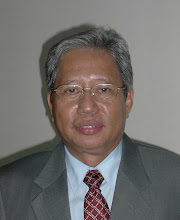Sabah Energy Sdn Bhd (SESB) had committed itself to use the green technology for over 100 MW in the east coast of Sabah. However, the development of 300 MW Coal-fired plant in Lahat Datu is still the best option to provide better electricity to the east coast of Sabah. This statement was given by Baharin Din, the managing director of SESB, as quoted by Borneo Post, April 27, 2010.
The current demand in the east coast of Sabah is 220 MW, and expected to grow to 400 MW by 2017. Although they have the east-west grid, the supply of 300 MW from the coal plant is unavoidable. The Environmental Impact Assessment is to be completed at the end of May 2010, and if it is approved the construction will be carried out immediately. It is expected that the first unit of 75 MW plant would be completed by 2013.
The current demand in the east coast of Sabah is 220 MW, and expected to grow to 400 MW by 2017. Although they have the east-west grid, the supply of 300 MW from the coal plant is unavoidable. The Environmental Impact Assessment is to be completed at the end of May 2010, and if it is approved the construction will be carried out immediately. It is expected that the first unit of 75 MW plant would be completed by 2013.

Comments